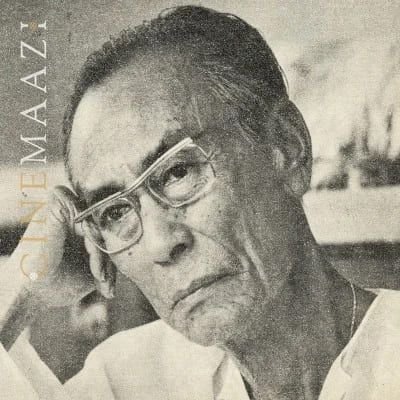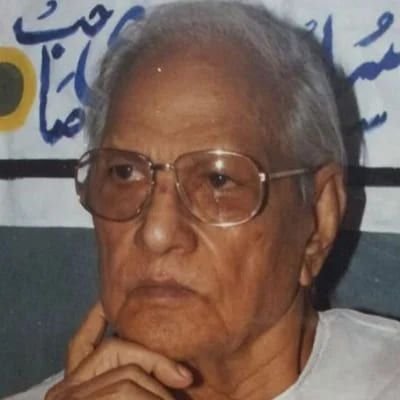Uday Shankar

Subscribe to read full article
This section is for paid subscribers only. Our subscription is only $37/- for one full year.
You get unlimited access to all paid section and features on the website with this subscription.
Not ready for a full subscription?
You can access this article for $2 , and have it saved to your account for one year.
- Born: 8 December, 1900 (Udaipur)
- Died: 26 September, 1977 (Kolkata)
- Parents: Shyamashankar Choudhury
- Spouse: Amala Shankar
- Children: Ananda Shankar, Mamata Shankar
Prominent dancer and choreographer of India, Uday Shankar’s adaptation of Western theatrical techniques to traditional Hindu dance led to the popularisation of the ancient art form in India and internationally. Considered the father of Indian contemporary dance, he made his mark on the global stage, including Europe, and the United States. Honoured with the Padma Vibhushan and Sangeet Natak Akademi award, he played a key role in fusing Indian and Western culture with his unique style characterised by Indian non-classical dance forms. His performances included musical “sound images” for effect from legendary musicians like Vishnu Das Shirali and Alauddin Khan Sahab, which went way beyond the regular equation between dance and musical accompaniment. A legendary figure, immensely popular in the West in the first half of the 20th century, he carved his own path sans any classical training. He is also known for his Hindi-language dance film which he wrote and directed—Kalpana (1948). His only film, with autobiographical strains, its story revolves around a young dancer's dream of setting up a dance academy. Starring himself and wife Amala Shankar, it also featured actress Padmini and Usha Kiran making their screen debut. Shot entirely as a dance ballet and a fantasy, it was the first film to present an Indian classical dancer in the leading role. He also went on to establish the Uday Shankar India Culture Centre in Almora, to popularise classical Indian dance forms.
Born on 8 December 1900 in Udaipur, Rajasthan, his father, Shyamashankar Choudhury, worked for the princely state of Jhalawar. Uday and his three younger brothers, including Ravi Shankar who would become a world-renowned sitarist, grew up in their maternal home in Nazratpur village near Varanasi.
His introduction to dance happened very young, his mother would dress him up as a girl; as she did not have a daughter, and ask him to dance while he would spontaneously perform movements that came to him naturally. He was also influenced by watching the Chamar caste community members performing during the festival of Holi, as well as by other folk dances. His key interest at the time, however, was painting. Impressed by his talent, the Maharaja of Jhalawar convinced Uday’s father to enrol him in the Sir J J School of Art.
On completing his diploma course, in 1920 he went on to pursue higher studies at the Royal College of Art in London. His talent for painting saw him complete the five-year course in three years. Interestingly, as he immersed himself in Indian culture on the advice of his college principal, Sir William Rothstein, he read copiously about Indian painting and sculpture at the British Museum, and found his way to dance. Fascinated by sculptures of Indian gods and goddesses in dance poses, he started to imitate their poses. Despite lacking training in dance, he was inspired to translate the images into movements.
He was still in college when he presented his first dance performance on 20 June, 1922. Organised by the League of Mercy, a British foundation established by the Royal Charter of Queen Victoria, it was titled Sword Dance. It won praise from King George V, and also impressed the legendary Russian ballerina Anna Pavlova who was also in the audience. She happened to be planning on producing miniature ballets based on Indian themes, and was in need of composers and choreographers. Despite lacking in formal training, Uday was chosen by Pavlova.
Entrusted with the responsibility of creating Indian style ballets, he created Radha Krishna and Hindu Marriage. They not only met with Pavolva’s approval but went on to become immensely popular in the West, which had never before experienced anything on these lines. Assisting her in choreographing several pieces over a year, Uday was encouraged to improve his Indian technique and style instead of imitating the Western style which was already known to audiences.
Post a year-long stint with Pavlova, he established his own dance troupe in 1924 in Paris. The going, however, was not easy. Minus Pavlova’s patronage, and the financial and professional stability that came with their association, he was rendered practically unemployed on leaving the company. Struggling to meet his daily needs, he apparently danced wherever opportunity beckoned including in small, noisy cabarets. Yet, even in these far from ideal venues, he managed to connect with the audience.
The tide changed in 1926. After working with sisters and former members of Pavlova’s troupe - Adelaide and Sokie, he teamed up with the Paris-based pianist Simonoe Bardier, who took on the stage name Simkie for her dance performances. He began choreographing solos and duets with Simkie, becoming very popular and was invited to present many shows.
His meeting with the Swiss painter and sculptor Alice Boner saw him feature in a series of models and drawings in different dance sequences. When he travelled back to India to source trained dancers and musicians for his troupe, she accompanied him in 1930. Charting a course across the country, he delved into the Ajanta-Ellora cave paintings, the architecture of South Indian temples; the art scene in Madras, the Bengal masters, Odisha crafts and more. He would portray many of these themes in his later performances.
Shankar became immensely popular for his adaptation of European theatrical techniques to Indian dance while he simultaneously ushered in a new era for traditional Indian temple dances. After several years in the West, in 1938 he returned to establish the Uday Shankar India Culture Centre in Almora, Uttaranchal (now Uttarakhand). His mission was to popularise classical Indian dance forms based on the recommendation of Rabindranath Tagore. Among the early trainees at the institute were actress Zohra Sehgal, Guru Dutt, and Amala Shankar, who would become his future wife, and also a legendary dancer. Together with his brother, sitarist Ravi Shankar, he explored classical and folk dance traditions, creating dance dramas incorporating social commentary.
When his institute downed curtains owing to a lack of funds, he diverted his energies into his film, which would turn out to be his magnum opus. Kalpana (1948) was India’s first dance-centric film. While it failed commercially, it was critically acclaimed and became a point of reference for filmmakers such as Satyajit Ray. Finding favour with dance lovers and educational reformers, Kalpana saw Shankar use a story-within-a-story narrative and the dance ballet form to depict his dream of a nation that would reach into the future while remaining anchored to its roots. The film begins as a film script being narrated by an elderly gentleman to a producer with a board outside his office saying, "Box office is God". The elderly gentleman narrates a tale about Udayan (played by Shankar), who pursues his dream of setting up an arts academy that will liberate victims of a rote learning-based educational system and reconnect them with their artistic traditions.
Post Kalpana, Uday continued to tour the world with his dance troupe. His notable works include The Great Renunciation, which was inspired by the story of the Buddha. The emotional expression of the story of the Buddha and his renunciation deeply moved audiences. As he himself would maintain, “More than anything else, art has no boundaries of nationality, race or creed. To create more understanding through dance as an art is the whole basis of my international performances.”
In the years that followed, he settled in Kolkata where he trained his own children Ananda and Mamata, as well as other dancers.
Uday Shankar passed away on 26 September, 1977, leaving behind a legacy that is “both rich and varied”. While his work was criticised by adherents of traditional Indian dance, his supporters included eminent Indians such as the poet Rabindranath Tagore. As Ashish Mohan Khokar for The Hindu explained it, he bequeathed “a whole new approach to dance, which was Indian without being based on any one classical style, a rare achievement at a time when most works were based on classical dances. He also gave mega productions a huge platform, on the lines of Bolshoi or Broadway.” He encapsulated his life’s work, explaining, “I take the help of the modern to make others understand the ancient. I take the West to the East. I take the modern art of presentation to show the spirit of India. I am a selector of truth, of beauty. Whatever is beautiful to me is real art.”
References
https://www.britannica.com/biography/Uday-Shankar
https://www.thebetterindia.com/244250/uday-shankar-father-modern-indian-dance-legend-birth-anniversary-ballet-history-unknown-nor41/
https://scroll.in/article/691671/in-dancer-uday-shankars-rare-film-from-1948-a-manifesto-for-a-new-india
Image courtesy: https://www.facebook.com/1773752726193601/photos/a.1773763329525874/1925691754333030/?type=3
-
Filmography (1)
SortRole
-
Kalpana 1948
-






.jpg)




